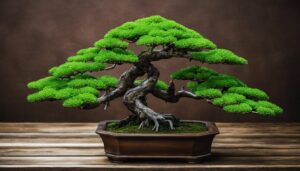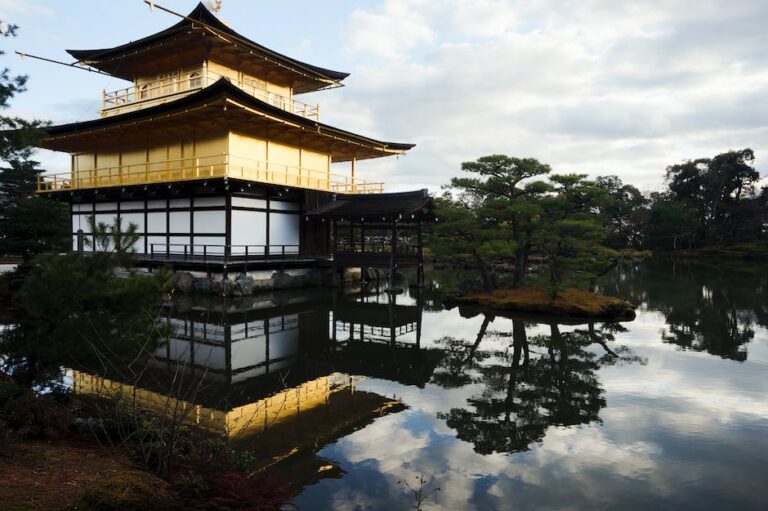Are Bonsai Trees Mini Trees
Do you ever wonder if bonsai trees are just mini versions of regular trees? Well, prepare to be  amazed as we delve into the fascinating world of these miniature masterpieces.
amazed as we delve into the fascinating world of these miniature masterpieces.
Bonsai trees are not simply shrunken trees, but rather meticulously crafted works of art that require skill and patience to cultivate. In this article, we will explore the history, types, techniques, care, and benefits of these captivating bonsai trees.
So, get ready to embark on a journey of discovery and appreciation for these remarkable botanical wonders.
Key Takeaways
- Bonsai trees are a symbol of Asian culture and have a significant history in Japan and China.
- Bonsai trees are miniature representations of nature and are admired worldwide for their aesthetic appeal.
- There are various styles and species of bonsai trees, and cultivation techniques vary depending on indoor or outdoor environments.
- Regular pruning and maintenance are essential for the care of bonsai trees, along with specific environmental conditions for their health and vitality.
History of Bonsai Trees
Now let’s dive into the history of bonsai trees and discover how they became such a beloved art form.
Bonsai tree symbolism has deep roots in Asian culture, particularly in Japan and China. Bonsai, which translates to ‘tray planting,’ originated in ancient China and later spread to Japan, where it gained popularity among the samurai and nobility.
Today, bonsai trees are admired worldwide for their aesthetic appeal and representation of nature in miniature form. Some famous bonsai trees include the Goshin, created by John Naka, and the Takanori Aiba’s bonsai tree sculptures. These masterpieces showcase the meticulous craftsmanship and artistic expression that bonsai entails.
As we explore the types of bonsai trees, you will discover the diverse species and techniques involved in cultivating these miniature marvels.
Types of Bonsai Trees
Did you know there are various types of bonsai trees to choose from? Bonsai trees are not just miniature versions of regular trees; they are carefully cultivated and shaped to create stunning works of living art.
Here are three popular bonsai tree styles:
- Formal Upright: In this style, the tree grows straight and upright, with evenly spaced branches and a tapered trunk. It resembles a full-sized tree in miniature form.
- Informal Upright: This style allows for more natural, organic growth patterns. The trunk may twist or bend, and the branches are asymmetrical, giving the bonsai a sense of movement and character.
- Cascade: As the name suggests, this style imitates a tree growing on a steep slope or cliff. The trunk cascades downwards, creating a dramatic and visually striking bonsai.
To successfully cultivate bonsai trees, it is important to consider whether they are best suited for indoor or outdoor environments. Some species thrive indoors, while others require the outdoor elements to flourish. Understanding the specific care requirements and environmental conditions will help you choose the right bonsai tree for your home or garden.
Techniques for Growing Bonsai Trees
To cultivate a healthy and visually appealing bonsai, it’s essential to learn and practice various techniques. Bonsai tree pruning is a crucial skill that involves carefully removing specific branches to shape the tree and maintain its miniature appearance.
Bonsai tree styling, on the other hand, refers to the art of creating a unique and aesthetically pleasing design by manipulating the tree’s branches, foliage, and trunk.
When describing bonsai trees, horticulturists and botanists would use scientific terminology and botanical names to provide detailed descriptions of the trees. They would discuss the physical features, leaf shapes, bark texture, and growth habits to enhance the reader’s understanding. This information is based on research and scientific knowledge, ensuring that the cultivation of bonsai trees is successful.
With proper pruning and styling techniques, you can create a stunning and well-maintained bonsai tree.
Transition: Now that you understand the techniques for growing bonsai trees, let’s explore the care and maintenance required to keep your bonsai tree thriving.
Care and Maintenance of Bonsai Trees
Proper care and maintenance are crucial for keeping your bonsai tree healthy and thriving. To ensure the best care for your bonsai tree, consider the following:
- Pruning techniques: Regular pruning helps maintain the desired shape and size of your bonsai tree. It also promotes new growth and enhances the overall aesthetic appeal.
- Watering schedule: Bonsai trees require specific watering needs. It is important to water your bonsai tree thoroughly, allowing the soil to dry out slightly between waterings. Overwatering can lead to root rot, while underwatering can cause the tree to become dehydrated.
- Environmental conditions: Bonsai trees thrive in specific environmental conditions. They require adequate sunlight, optimal temperature, and proper humidity levels to grow and develop properly.
By implementing these care techniques, you can ensure the health and vitality of your bonsai tree. Taking the time to care for your bonsai tree will reward you with a stunning and captivating addition to your home or garden.
Now that you understand the importance of care and maintenance, let’s explore the benefits of having bonsai trees.
Benefits of Having Bonsai Trees
Taking care of bonsai trees can bring you joy and a sense of fulfillment. As a gardener, you understand the importance of providing the right care for these miniature trees.
Bonsai trees, scientifically known as ‘Bonsai,’ require specific care to thrive. They come in various species, each with unique growth patterns and botanical characteristics. Detailed descriptions of bonsai trees include their physical features, leaf shapes, bark texture, and growth habits. Research-based information is crucial for successful cultivation. It provides insights into specific care requirements, propagation techniques, and environmental conditions necessary for their well-being.
Aside from the horticultural benefits, having bonsai trees also offers health and psychological benefits. Studies have shown that spending time with nature, such as tending to bonsai trees, can reduce stress, improve mood, and enhance overall well-being.
Conclusion
Congratulations on reaching the end of this article! By now, you have learned about the fascinating history, various types, and techniques for growing bonsai trees.
The care and maintenance of these mini trees may seem intricate, but the benefits they bring are worth it. Just like a tiny masterpiece, bonsai trees capture the essence of nature in a small and captivating form.
So why not embark on the journey of cultivating your own bonsai tree? With the right knowledge and dedication, you can create a living work of art that will bring tranquility and beauty to your surroundings.



